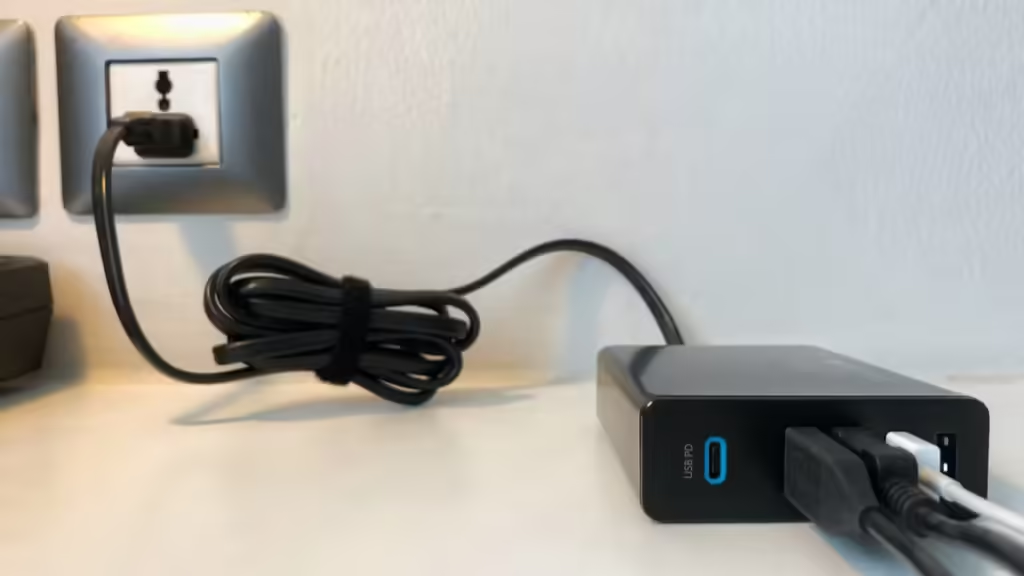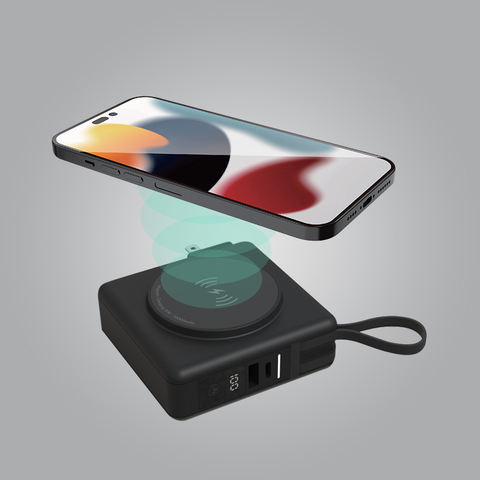
As demand for fast-charging solutions grows, USB Power Delivery (PD) technology has become a key feature in modern power banks. USB PD enables faster, more efficient charging for a wide range of devices, from smartphones to laptops. This article explains the importance of USB PD in power banks and why it matters for power bank buyers.

1. What is USB Power Delivery (PD)?
USB Power Delivery (PD) is a fast-charging technology that enables higher power transfer over USB connections, particularly through USB-C cables. It allows for up to 100W of power, significantly reducing charging times for a wide variety of devices, including smartphones, laptops, and tablets.
Benefits of USB PD:
- Faster Charging Times: USB PD enables quick charging for smartphones, tablets, laptops, and other devices, reducing downtime.
- Universal Compatibility: USB PD is compatible with most modern devices, from mobile phones to larger electronics, making it ideal for businesses with a diverse customer base.
- Smart Charging: The technology automatically adjusts the charging power based on the device’s needs, optimizing both charging speed and energy efficiency.
2. Why USB PD is Essential for Power Banks
- Rapid Charging: USB PD-enabled power banks can charge devices at significantly faster rates compared to traditional USB chargers, which is especially valuable for business travelers, remote workers, and tech-savvy consumers.
- High Power Output: USB PD supports a wide range of power outputs, from small devices to laptops, enabling power banks to handle more demanding electronics.
- Efficiency and Safety: USB PD ensures the safe and efficient transfer of power by adjusting voltage levels, preventing overcharging and overheating issues common with older charging technologies.
3. Key Features of USB PD in Power Banks

4. How USB PD Benefits Power Bank Buyers
a) Faster Charging = Happier Customers
With increasing reliance on portable electronics, customers expect fast-charging solutions. USB PD meets these demands by cutting down charging times, ensuring a better user experience.
b) Future-Proof Investment
As USB PD technology becomes the standard for modern devices, power banks with USB PD will remain relevant in the market for the long term. B2B buyers investing in USB PD-equipped power banks are preparing for the future.
c) Increased Market Demand
As more devices incorporate USB PD, consumer demand for power banks that support this fast-charging technology will continue to rise. Businesses that offer USB PD power banks can tap into this growing market.
5. How to Choose the Right USB PD Power Bank for Your Business
- Battery Capacity (mAh): The battery capacity affects how many charges a power bank can provide. Higher capacities (e.g., 20,000mAh or 30,000mAh) are ideal for business professionals and frequent travelers who need to charge larger devices like laptops.
- Port Compatibility: Ensure the power bank includes USB-C ports, as most modern devices use this interface for fast charging. Many power banks also offer USB-A ports for older devices.
- Safety Features: Choose power banks with built-in safety protections like overcharge, short-circuit, and temperature control to ensure the safety of the device and its user.
- Brand Reputation: Opt for power banks from reputable manufacturers known for producing high-quality, reliable charging solutions that comply with international safety standards.
Conclusion
USB PD technology is essential for offering fast-charging power banks. It ensures quick, efficient charging and meets the needs of modern devices. As demand for faster charging grows, USB PD is the technology to watch.







